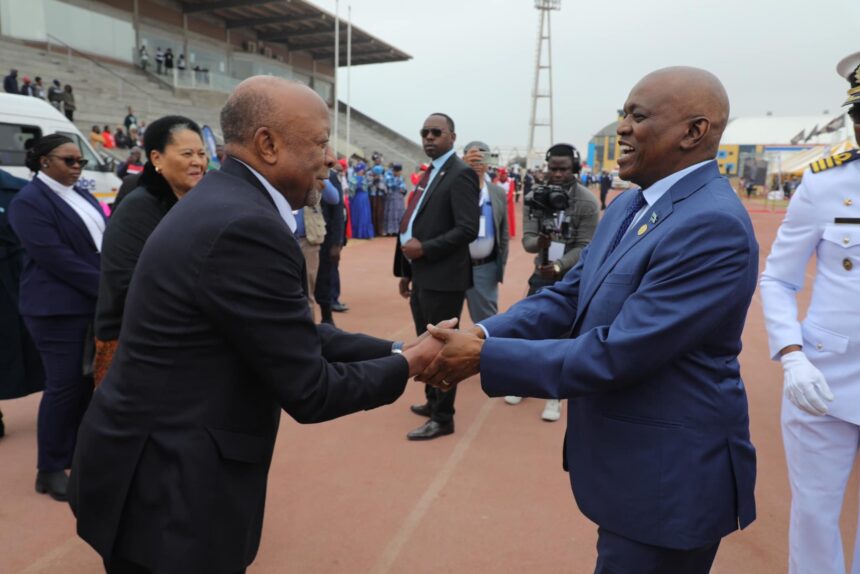WALVIS BAY – Namibia Chamber of Commerce and Industry (NCCI) president Bisey /Uirab said Botswana is one of Namibia’s most important trading partners, as the trade value between the two countries amounts to N$20 billion.
He was speaking at the Swakopmund International Trade Expo (SWAITEX) that ended this weekend.
He also highlighted the significance of sound trading relations among the two countries.
“Our key export products to Botswana include diamond mineral products, petroleum products, livestock, dairy, poultry and other agricultural products, as well as fish products. Conversely, we import coal, veterinary medicines, building materials, as well as base metal products from Botswana,” /Uirab explained.
Botswana, also trades with Namibia through businesses, such as Choppies which recently opened their 20th shop in Namibia; Letshego Bank and FurnMart.
Namibia’s presence is also visible in Botswana through the Capricorn Group, which owns Bank Windhoek, and has a strong presence in Botswana through Bank Gaborone.
He said there remains great scope for business interactions between the business communities of the two countries.
However, conscious efforts must be made to tackle joint projects in Namibia and Botswana.
“We know we can do better. We know that we can do more in this regard. As a neighbouring country, trade with Botswana is seen to provide enormous benefits, amongst them reduced transport and logistical costs, minimum transaction costs due to interconnections of our financial systems, as well as relative ease of entering the market as opposed to entering a new market,” /Uirab explained.
The two countries represent a combined population market of 6 million people and a GDP value of N$400 billion in nominal terms.
Increased trade
Deliberate efforts to increase bilateral trade are ongoing, including the long-term lease of the Botswana Dry Port within the harbour.
The governments of Namibia and Botswana are determined to increase trade using the Walvis Bay harbour and surrounding infrastructure.
President Nangolo Mbumba and Botswana president Mokgweetsi Masisi recently visited the Port of Walvis Bay as part of Masisi’s working visit that ended last Friday.
“The whole purpose… is exactly to make sure that whatever facilities we are having – roads, harbours and airports – to facilitate the economy, we want to use them jointly, and to use them to the maximum for the benefit of our citizens of our two countries,” said Mbumba.
Masisi said “I have been here before, and it’s a delight to come back. My impressions are, you know, similar to the first time, very impressive, commendable, and explain why we are using this port increasingly. It is our intention to grow our trade, using this port”.
Meanwhile, managing director for Sea Rail Logistics, Derick Mokgatle, also indicated that plans to expand their dry port facilities are ongoing.
“Construction of additional warehousing facilities, your excellencies, is needed at the dry port. We are considering constructing another 5 000-square-metre facility here, targeting copper from Botswana as well as from other regional markets,” he explained.
The opportunities they are looking at include copper exports from Botswana, beef, small stock from the Tsabong area and the abattoir that is about to be commissioned.
Namport CEO Andrew Kanime also said there has been significant growth in cargo volumes destined for Botswana since 2022.
“In terms of cargo that we handle specifically here at the port, originating from Botswana, are vehicles, clothing, spare parts, tyres and the like, in terms of imported commodities, but in terms of exported commodities, we also specifically handle copper concentrate and also copper and coal.
Those are the commodities that have especially contributed to the significant growth that we have seen over the past two years.”
According to him, a port that is not connected – whether to the local market or to the hinterland – has the potential to become a white elephant.
“That is why, for us, as a port, to play our meaningful role in terms of contributing to regional integration, we do need to ensure that transportation infrastructure is actually put into place,” he said.


